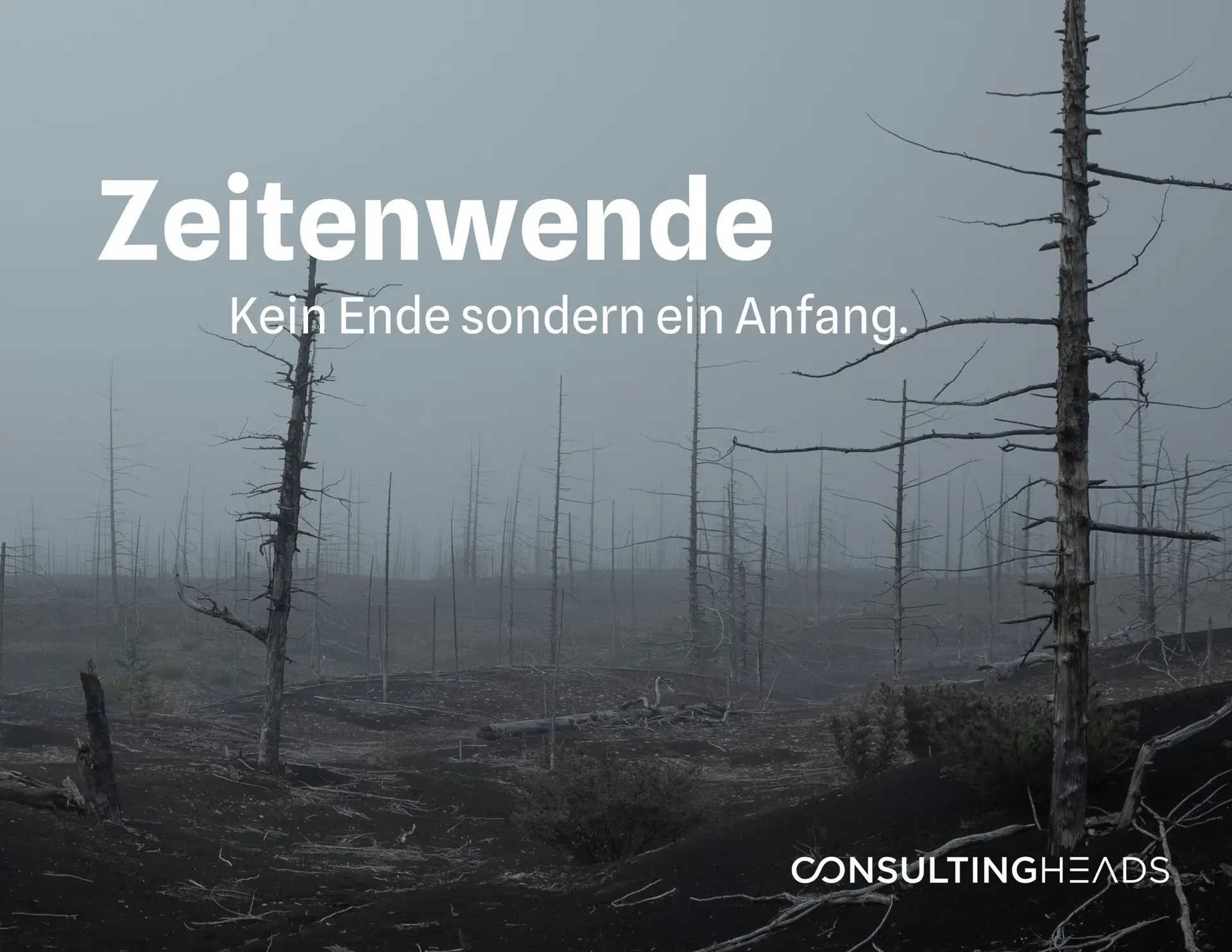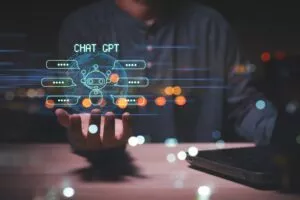Digitalization, bureaucracy, climate and social change. Will Germany get its act together in a mobile global culture or will we slow ourselves down?
Interview with Growth Manager, Mobility and Fintech expert Matthias Trusheim.
E-mobility as the key to climate-friendly mobility
Is electromobility the key to climate-friendly mobility worldwide? And what does green high-tech ecology have to do with mobility?
The European Commission’s “Green Deal” has translated sustainable management into legal texts. Within the next 5 years, not only large listed companies with a turnover of over 40 million euros or a balance sheet total of over 20 million euros will have to disclose their environmental and social guidelines as well as details of sustainability targets and the company organization, but from 2026 small and medium-sized companies will also be obliged to do so. And mobility is an essential part of this reporting obligation, the data for which is already being collected in order to be prepared for the upcoming ESG environmental reporting by the end of 2024.
The question of a mobility strategy will therefore affect every company in the future: How will business trips be organized? How do employees get to work? What is the internal mobility policy? Which vehicles are prioritized in the fleet? Is there a mobility budget for alternative means of transportation? There is no doubt about it. Ecology will be the big issue of the 21st century. The “Greta” generation has changed our view of the future. But what kind of ecology are we actually talking about in this context?
Today’s “fear and blame” ecology can only divide society and ultimately does little to prevent CO2 emissions. A “scarcity and sacrifice” ideology creates counterproductive stress and leads to distribution wars. Could a different ecology shape the future and mobility? Looking at the megatrends and their technological and systemic changes makes precisely this possible. And one thing is clear: the operation of electric vehicles, especially in conjunction with electricity generated from renewable sources, produces significantly lower CO2 (carbon dioxide) emissions. In addition, electric vehicles will be able to act as mobile electricity storage units in the future to compensate for fluctuations in wind and solar power and thus improve the expansion and market integration of renewable energies.
This creates a space of possibility in which we are on the way to the future. Game changing is the key. But “If nothing changes nothing changes”. Are we trying hard enough? In addition to the hurdles and brakes already mentioned, environmental debates are having an impact on business models and corporate cultures. A lack of understanding and, of course, convenience play a role here. ESG or “Environmental, Social & Corporate Governance” is becoming increasingly important. However, companies are no longer achieving success with indirect CO2 offsetting overseas. The reason: society’s perception of direct and local environmental and social issues has increased in recent years. All sectors are in the midst of a radical process of change. And here, too, it’s all about “getting your act together”.

Electricity prices and the future of e-mobility
Electricity prices and acquisition costs are still extremely high. Does this situation affect the future of e-mobility?
The rise in electricity prices is causing problems for current e-mobility! At least that’s what you hear from the automotive industry. There are fears for the future of electric cars and the transport revolution in Germany. For the models to become established, they must cost less per 100 kilometers than petrol or diesel vehicles. Those without their own wallbox at home are the worst off. The tariffs for public charging stations are now so high that electric vehicles are more expensive to run than combustion engines in many places. And it is likely to be a few weeks at most before the next round of price increases from the charging network operators.
What would be a solution to this problem?
We need a regulatory corset, i.e. rules. These should ensure that we maintain the normal gap between fuel prices and electricity prices. Electricity must remain cheaper than petrol and diesel. Only then will the incentive to buy electric cars be sufficient and the transport transition will succeed quickly enough.
And what about the acquisition costs?
However, the acquisition costs are the bigger brake in the current year 2024. After all, in December, the traffic light government led by Economics Minister Robert Habeck announced the end of the EV purchase premium virtually overnight and even before the turn of the year, out of helplessness as to how to counter the ruling of the Federal Constitutional Court due to sudden, acute financial problems. This withdrawal tore a hole in the industry’s current plans and also shocked buyers who had already ordered an electric car.
But isn’t the German government cutting into its own plans by ending the purchase premium?
If we in KPI-driven companies were to implement such promotions operationally without detailed business cases and without the sign-in of shareholders and the finance department and cause a shit storm for our suppliers and partners, new minds would be needed. Despite these circumstances, the German government is sticking rigidly to the goal of having around 15 million EVs on Germany’s roads by 2030. This seems just as unrealistic as the coalition agreement’s target of building over 400 thousand homes per year. A miracle would probably have to happen to achieve these figures in the next seven years.
But the figures for EV production in the automotive industry show a positive increase. Isn’t that good news?
Although the rising EV figures of +34% (1 HY 2024) at BMW show a positive trend (+2.3% compared to the previous year), this has been severely curtailed with regard to their original plans. Due to this decline in EV sales, the market share of combustion engines is now experiencing an upswing. The car rental company Hertz is clearly demonstrating this, as they are swapping e-cars for combustion engines again. The sluggish expansion of the charging infrastructure and the corresponding networks, as described above, is also putting pressure on the industry. I am happy to come back to Aral here, because they are complaining that the expansion of the infrastructure is stalling because the network operators are having problems with the power supply to the UFC charging station.
Is there enough electricity? Is the power grid fit for electromobility?
Around 15 million electric cars are expected to be on German roads by 2030. They need to be connected to the grid. But which one? One thing is clear: we need to integrate the charging infrastructure into building management. This will require business partnerships with cooperatives, municipalities, developers and the entire real estate industry. But in general, the answer is simple. If all of the 45 million or so cars on German roads were largely electric, this would require around 100 terawatt hours (TWh) per year – which is only one sixth of the total electricity consumed in Germany each year. In 2019, for example, 244 TWh of electricity was generated from renewable energies, which is more than twice as much as a fully electric vehicle fleet would need. So if electromobility catches on faster than planned, there will even be enough renewable energy available to power the vehicles. And the expansion of renewable energies is also progressing rapidly.
Forecast: e-mobility in Germany
So why will e-mobility prevail in Germany?
It will assert itself if politics asserts itself. As already described, we are in a new era of mobility that is geared towards social megatrends.
A new era is often barely noticeable because the change processes are fluid. People hardly notice the milestones of the change that is taking place. It is therefore similar to many well-known developments in the last few decades of this millennium. First the photography industry, then the music industry and then the automotive industry in the next decade. E-mobility and autonomous driving will change the automotive industry.
The transformation will not be directly visible in the cars, which will look virtually unchanged for the time being. But the filling stations will stand out. They are among the most important catalysts of tomorrow’s mobility. It will therefore be important to work with people who do not think in terms of the automotive industry, i.e. who come from a different industry and are disruptive. In many conversations, however, I keep noticing how little awareness there is of how new technologies and mindsets from outside will also create new business models and needs.
Obviously the car industry is still dreaming the beautiful sleep of success. Yes, of course, and sorry it’s unfair to say that, because there are of course many innovatively driven car manufacturers, but I keep recognizing the pattern of naivety with regard to their human capital. People are all too quick to think in the same patterns – in previous business models. However, it is quite unlikely that this is exactly what will happen, i.e. a fundamental change in technology while the business model remains the same. I see a high probability that these developments will come as described and it often happens faster than you think. “Autonomy” will therefore be the killer app and the big wave to ride in the next decade.
After all this information, let’s get back to it in a nutshell:
To what extent does this affect companies? What do companies – including those that are not part of the industry – need to do now?
Pay attention, develop and deliver. The next ten years will change mobility more than the previous 100. There will be some surprising success stories. The gaming sector will gain relevance in this area, for example in bridging loading times as well as Web 3.0-based payment. And this is just one example of how seemingly uninvolved companies can benefit from the transport revolution. If they accept the challenges and think ahead.
How and where can experts support companies in this?
With a holistic view of short, medium and long-term developments. It’s not about looking in the rear-view mirror, but about innovation and agility. Thinking ahead, acting ahead. We don’t need the thinking of authorities or experts who have concerns. We need game changers. Strategies don’t fail because of development, but because of implementation in the organization.
Often, you simply need fresh air to break out of your comfort zone.
About Matthias
Matthias Trusheim is one of Germany’s top consultants in the fields of e-mobility, telecommunications, payment and the networking of disruptive industries.
His current focus: the porous charging infrastructure in Germany and the trend reversal in the development from a rigid automotive mindset to trend-oriented mobility.
Prior to his current activities, the management consultant successfully accompanied transformation processes in the communications industry. Trusheim lives in Munich and in between wherever growth and change are required.
Take the opportunity to prepare your company for the future of mobility!
Rely on innovation and agility to benefit from the megatrends of e-mobility and digitalization. Talk to us about the right strategies and find out how you can make your company fit for the transformation.






